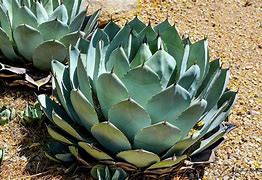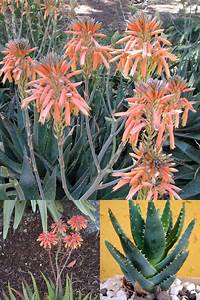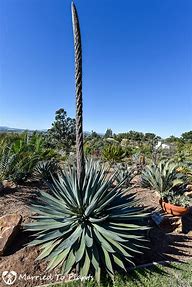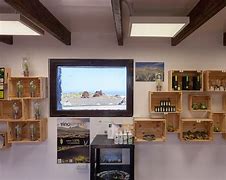EH UP VERA, THE WIFE´S BACK
EH UP VERA, THE WIFE´S BACK
by Norman Warwick
Readers may recall that we recently spoke with Marta Bourke, owner of the Natural Treasure store, where you can find all things: amber, crystals, and dreamcatchers all having been artfully created and now artfully displayed.
A fascinating part of her interview had Polish born Marta telling me how she often uses the cacti and Aloa and Agave plants tgo create her own health drinks which had me revisitng a previous article, written several years ago, that reminded me od another Vera altogether.
Not Aloe Vera, but Our Vera from Coronation Street.
Aloe and agave plants may be prickly customers, but they also offer fascinating, additional qualities to welcome into your life. Weird, wonderful, legendary and perfectly suited for Lanzarote’s climate, they are seen all over the landscape here, and in many ways are part of the culture. So come follow your art down the sidetracks & detours to where the seemingly unwelcoming plant is loved for its healing and restorative qualities.

They are all over Lanzarote: When we first came to live here, five years ago now, they somehow seemed to be telling us not to come too close, as they stood in spiky clusters by the roadside. These long, four-metre stalks tilt at a 45 degree angle on hillsides; in their sparse little clusters they are the closest the island gets to a forest.
We had seen them on previous holidays of course, and accepted them as simply some of the less beautiful members of the flora and fauna of the island. However, by the time we came to live here one or two new museums had been built here to tell their history in book and photograph and film and aural records. These strange keep-your-distance characters have their own history and folk lore retained in those museums, and now, too, in regular magazine articles which laud their virtues and remind us how much they contribute to the island´s economy.
They are Aloe and Agave plants, and if you think cacti are weird, these strange plants will blow your minds. If they look like alien plants, that’s because they are – aloes come from southern Africa and agaves from the Americas – but both have settled here on Lanzarote like few other plants. These desert-dwellers are perfectly adapted for the climate here.
These plants, though, are not cacti, but rather are species of Lilley, that for thousands of years have been known to the islanders as having healing qualities.
History tells us that Cleopatra was a user of Aloe Vera and that Christopher Columbus carried stock on his boats, for healing purposes.
Aloes and Agaves are succulents, and the two types of plants are similar, with a cluster of large flame-shaped spikes. However, the main difference can be seen when you answer the question of whether you’d sit on it for fifty Euros.

With an Aloe, you might consider it. These are smaller, softer plants, and even their spikes can be soft to the touch. It probably wouldn’t be the most comfortable seat you’ve ever had, but it’s do-able.

However, you will almost certainly not want to mess with an Agave, which often has needle-sharp, woody spikes that can give you a wound that will ache for weeks.
Another way to distinguish them is to try and snap a leaf: Aloes break easily, revealing precious sap. Agaves are tough and fibrous.

Aloes bloom several times in their lives, and you’re likely to see the yellow or red bell-shaped blooms of Aloe Vera plants frequently, arranged in Christmas-tree shapes, on their stalk. Aloes thrive in cooler months of the year and tend to lay low in the hot summer months, when they often turn an attractive pink colour. This is why aloes should be given extra water in winter but only sparingly in summer, when they do not take in water and may rot.

Agaves bloom once in their lifetime, and it is awesome. The spiky plant you love will suddenly shoot a stalk up so quickly that you can almost see it growing. This will reach several metres in just a few weeks before producing flowers that are pollinated and become baby agaves. The plant grows so high to ensure that the offspring fall as far away from the parent as they can, where more nutrition is available.
Aloes put on growth in summer, and should be kept fairly dry over the winter months. Once an Aloe has shot its flower stalk, it dies and you’ll need a specialist, or a suit of armour, to get rid of it.
If you’ve used the hand-washing gel in several local shops and supermarkets, you’ll already know about The substantial industry based around Aloe Vera on Lanzarote.
Aloe is famous for its soothing, calming, medicinal qualities and many local islanders have learnt to break off a leaf and dab the cool, clear sap onto a burn or abrasion.
It is also taken internally to soothe digestion, and is rich in vitamins, but it’s a good idea to know exactly what you’re doing before you start munching your own Aloes.
There is, of course, a wide range of products such as shampoos and sanitisers and skin and health care items on sale in the Aloe Vera museums are also retailed in pharmacies and similar outlets and products are much used in the many spa facilities on the island.

The museums are interesting places to visit, and there is no hard-sell approach to their high-end quality, but value for money, products. We are fortunate enough to have the main museum just up the road from us in Yaiza and we enjoy dropping in occasionally and invariably watch again the twenty minute film showing the history of the development of the industry on Lanzarote. We then look round the displays of art work and photography adorning the walls before heading for the sales and service counter. From friendly and very knowledgeable staff, clearly well trained in the ethos of the company, we purchase shampoos, pain relievers, moisturisers, hand creams and foot creams from an extensive range of specialist products.

tour Lanzarote has ´the biggest organic and traditionally cultivated Aloe Vera plantation in the world´, and conducted tours of the ´fields´ are regularly available.
The plantation is located in the most northerly region on the island, in Orzola and has been declared a centre of interest for Culture and Tourism, and offers exceptional value to its 90,000 visitors per year. These visitors are addressed by professional staff explaining the cultivation process, development and handling of Aloe Vera.
Of course, the plant itself benefits form the extraordinary climate here on the island, Lanzarote is a perfect natural habitat for this plant, with its amazing healing and re-generative qualities. (This can all sound like an extravagant advertising claim, and my wife and I don´t fall easily for such codswallop, but we do genuinely feel more benefit of the products we use than from other similar treatments we have tried).
Apparently, numerous studies from around the world agree with our own independent findings, citing Aloe Vera as one of the best health ranges in the world, largely due to its geographical location here on Lanzarote. Our sub-tropical climate and volcanic soil are just what the plant thrives on, and the combination of these factors increases the benefits the plant can offer us.
There are ranges of health, facial and body care products available as well as an intriguing sounding Lanzarote wine therapy described in the product catalogue of Lanzarote Aloe Plus Lanzarote, which also has a kid’s line detailed amongst its range of ´healthy natural cosmetics.

My wife (my editor in the sense that she ´its me upside the ´ed´ if she finds anything in these articles that she doesn´t approve of) says I should not use the following comparison to close this feature. However, she´s out in the garden so I´ll be quick, and say that Aloe Vera reminds me of ´Our Vera´ Duckworth, the Coronation Street character who was always prickly and ferocious on the outside but, inside, had a heart of gold and would help anyone.
Oops, my wife´s coming back. Full stop. . Done. Phew !




Leave a Reply
Want to join the discussion?Feel free to contribute!